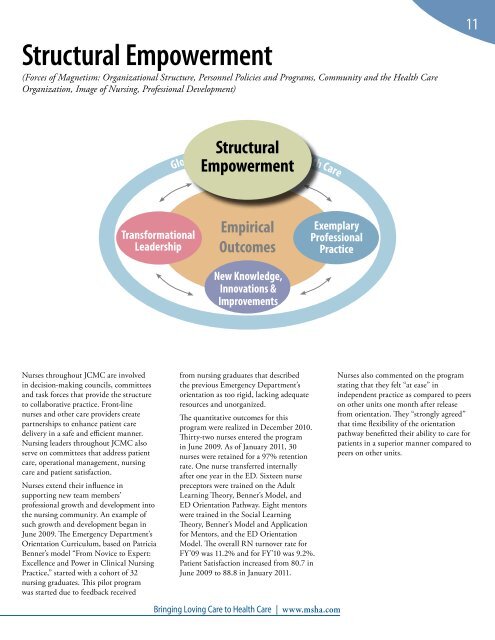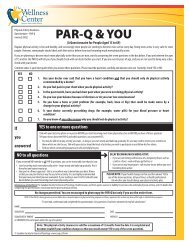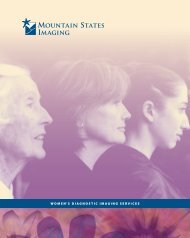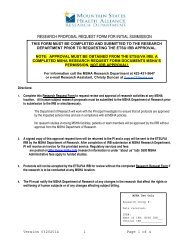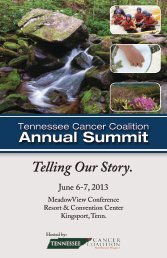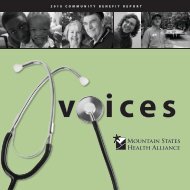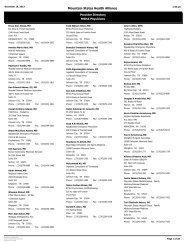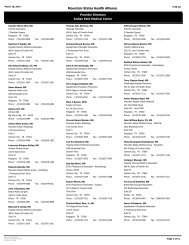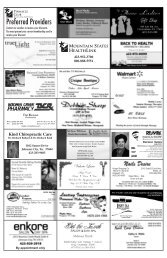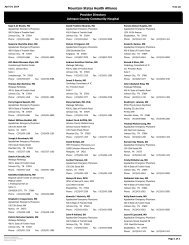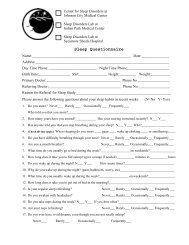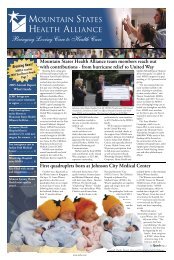Nursing Annual Report - Mountain States Health Alliance
Nursing Annual Report - Mountain States Health Alliance
Nursing Annual Report - Mountain States Health Alliance
You also want an ePaper? Increase the reach of your titles
YUMPU automatically turns print PDFs into web optimized ePapers that Google loves.
Structural Empowerment(Forces of Magnetism: Organizational Structure, Personnel Policies and Programs, Community and the <strong>Health</strong> CareOrganization, Image of <strong>Nursing</strong>, Professional Development)11StructuralEmpowermentGlobal Issues in <strong>Nursing</strong> and <strong>Health</strong> CareTransformationalLeadershipEmpiricalOutcomesNew Knowledge,Innovations &ImprovementsExemplaryProfessionalPracticeNurses throughout JCMC are involvedin decision-making councils, committeesand task forces that provide the structureto collaborative practice. Front-linenurses and other care providers createpartnerships to enhance patient caredelivery in a safe and efficient manner.<strong>Nursing</strong> leaders throughout JCMC alsoserve on committees that address patientcare, operational management, nursingcare and patient satisfaction.Nurses extend their influence insupporting new team members’professional growth and development intothe nursing community. An example ofsuch growth and development began inJune 2009. The Emergency Department’sOrientation Curriculum, based on PatriciaBenner’s model “From Novice to Expert:Excellence and Power in Clinical <strong>Nursing</strong>Practice,” started with a cohort of 32nursing graduates. This pilot programwas started due to feedback receivedfrom nursing graduates that describedthe previous Emergency Department’sorientation as too rigid, lacking adequateresources and unorganized.The quantitative outcomes for thisprogram were realized in December 2010.Thirty-two nurses entered the programin June 2009. As of January 2011, 30nurses were retained for a 97% retentionrate. One nurse transferred internallyafter one year in the ED. Sixteen nursepreceptors were trained on the AdultLearning Theory, Benner’s Model, andED Orientation Pathway. Eight mentorswere trained in the Social LearningTheory, Benner’s Model and Applicationfor Mentors, and the ED OrientationModel. The overall RN turnover rate forFY’09 was 11.2% and for FY’10 was 9.2%.Patient Satisfaction increased from 80.7 inJune 2009 to 88.8 in January 2011.Bringing Loving Care to <strong>Health</strong> Care | www.msha.comNurses also commented on the programstating that they felt “at ease” inindependent practice as compared to peerson other units one month after releasefrom orientation. They “strongly agreed”that time flexibility of the orientationpathway benefitted their ability to care forpatients in a superior manner compared topeers on other units.


